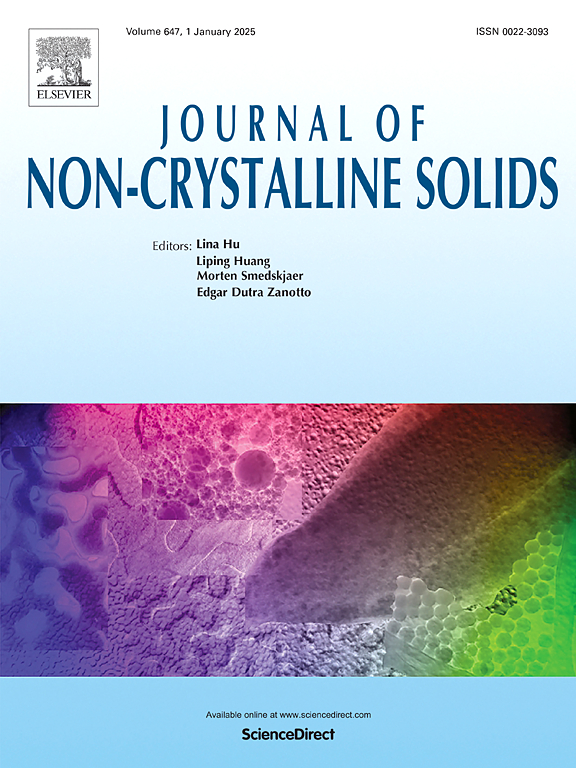FTIR-ATR spectroscopic study and statistical modeling of composition-structure-property of MgO-CaO-Al2O3-SiO2 Glasses with and without Boron
IF 3.5
3区 材料科学
Q1 MATERIALS SCIENCE, CERAMICS
引用次数: 0
Abstract
E-Glass fibers with and without boron have been widely used in commercial composite materials as a lightweight strong and durable reinforcement material. Previously, the Raman spectroscopic method has been successfully applied to study quaternary system MgO-CaO-Al2O3-SiO2 (MACS) without boron and the network structures derived from Raman analysis have been used to model various glass properties relevant for processing, and composite mechanical application. In this study, FTIR (Fourier transform infrared)—ATR (total attenuated reflectance was applied to study a set of new MCAS glasses with and without boron to explore the feasibility in the development of a statistical-based database, composition–structure-property (C-S-P), for new glass design by using ATR method. Should a glass developer not have access to a Raman spectrometer, results from the current study support the use of ATR methodology to develop the C-S-P database. Furthermore, as demonstrated from this study, the use of the ATR method also avoids the complication of IR hydroxyl band interference with the curve deconvolution analysis, which occurs from the use of KBr chemical as a carrier matrix for conducting FTIR measurement in a transmission mode.
含硼和不含硼的 MgO-CaO-Al2O3-SiO2 玻璃的傅立叶变换红外-原子吸收光谱研究和成分-结构-性能统计建模
含硼和不含硼的电子玻璃纤维作为一种轻质、坚固、耐用的增强材料已被广泛应用于商用复合材料中。此前,拉曼光谱方法已被成功应用于研究不含硼的四元系 MgO-CaO-Al2O3-SiO2 (MACS),拉曼分析得出的网络结构已被用于模拟与加工和复合材料机械应用相关的各种玻璃特性。在本研究中,傅立叶变换红外(FTIR)-全衰减反射(ATR)被用于研究一组含硼和不含硼的新型 MCAS 玻璃,以探索使用 ATR 方法为新型玻璃设计开发基于统计的成分-结构-性能(C-S-P)数据库的可行性。如果玻璃开发人员没有拉曼光谱仪,本研究的结果支持使用 ATR 方法开发 C-S-P 数据库。此外,如本研究所示,使用 ATR 方法还可避免红外羟基带对曲线解卷积分析的干扰,这种干扰是在透射模式下使用 KBr 化学物质作为载体基质进行傅立叶变换红外测量时产生的。
本文章由计算机程序翻译,如有差异,请以英文原文为准。
求助全文
约1分钟内获得全文
求助全文
来源期刊

Journal of Non-crystalline Solids
工程技术-材料科学:硅酸盐
CiteScore
6.50
自引率
11.40%
发文量
576
审稿时长
35 days
期刊介绍:
The Journal of Non-Crystalline Solids publishes review articles, research papers, and Letters to the Editor on amorphous and glassy materials, including inorganic, organic, polymeric, hybrid and metallic systems. Papers on partially glassy materials, such as glass-ceramics and glass-matrix composites, and papers involving the liquid state are also included in so far as the properties of the liquid are relevant for the formation of the solid.
In all cases the papers must demonstrate both novelty and importance to the field, by way of significant advances in understanding or application of non-crystalline solids; in the case of Letters, a compelling case must also be made for expedited handling.
 求助内容:
求助内容: 应助结果提醒方式:
应助结果提醒方式:


